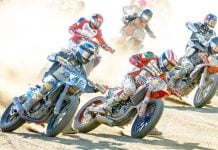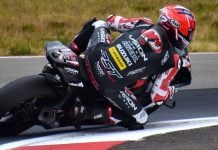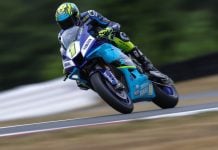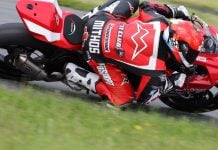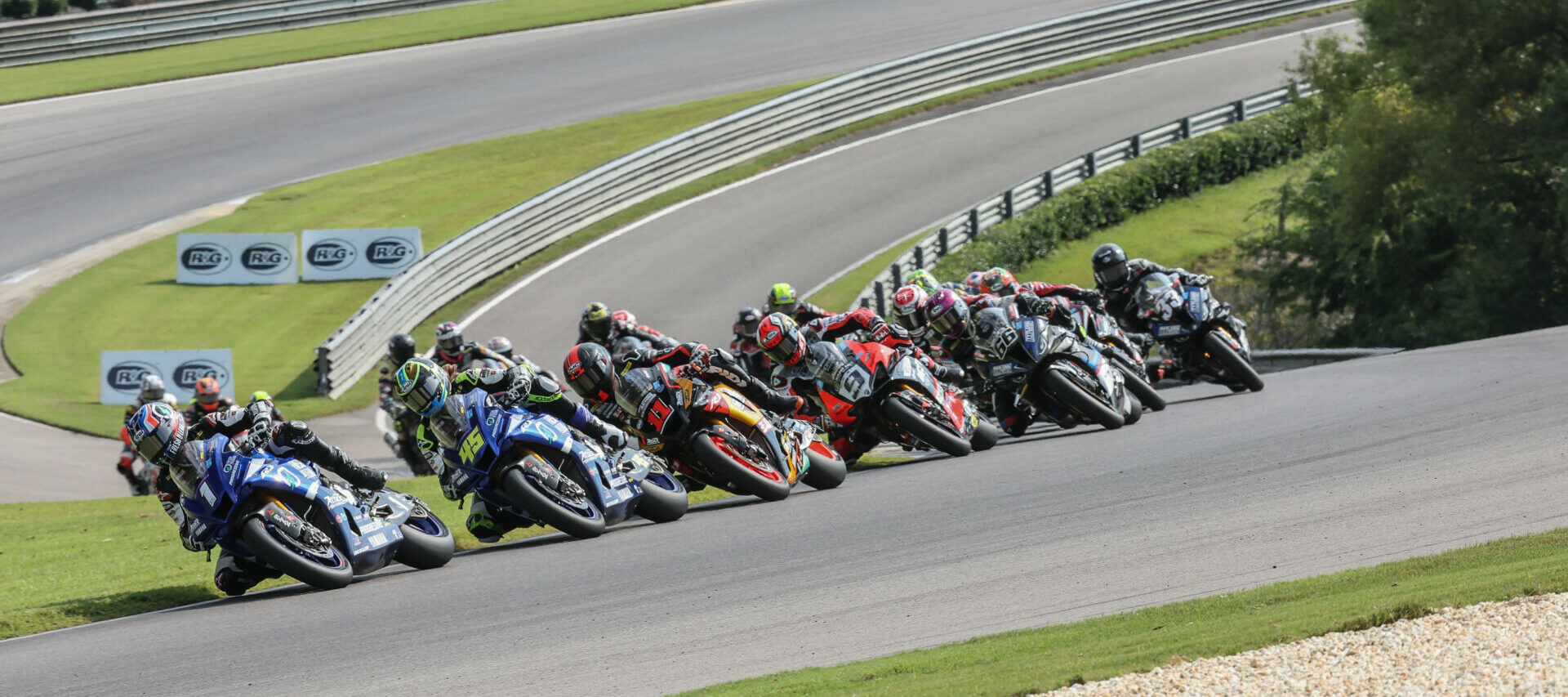It’s Day Two Of A Blazing Hot Weekend, Your Head Aches And You Feel Terrible. What’s The Cure? Learn How To Hydrate Right And Deal With The Heat!
To read more articles like this one originally published in the December 2015 print issue of Roadracing World, subscribe to Roadracing World. (The article has been updated with additional photos and information from later MotoAmerica racing seasons.)
By Dr. Laura Ellis
Racers and team owners place great emphasis on building and tuning fast, lightweight, reliable bikes, but building and fueling the rider is just as important. Motorcycle racers are extreme athletes frequently performing in difficult conditions. I get a lot of questions from racers on how to optimize their performance. This article addresses some of the most common concerns I see in the sport.
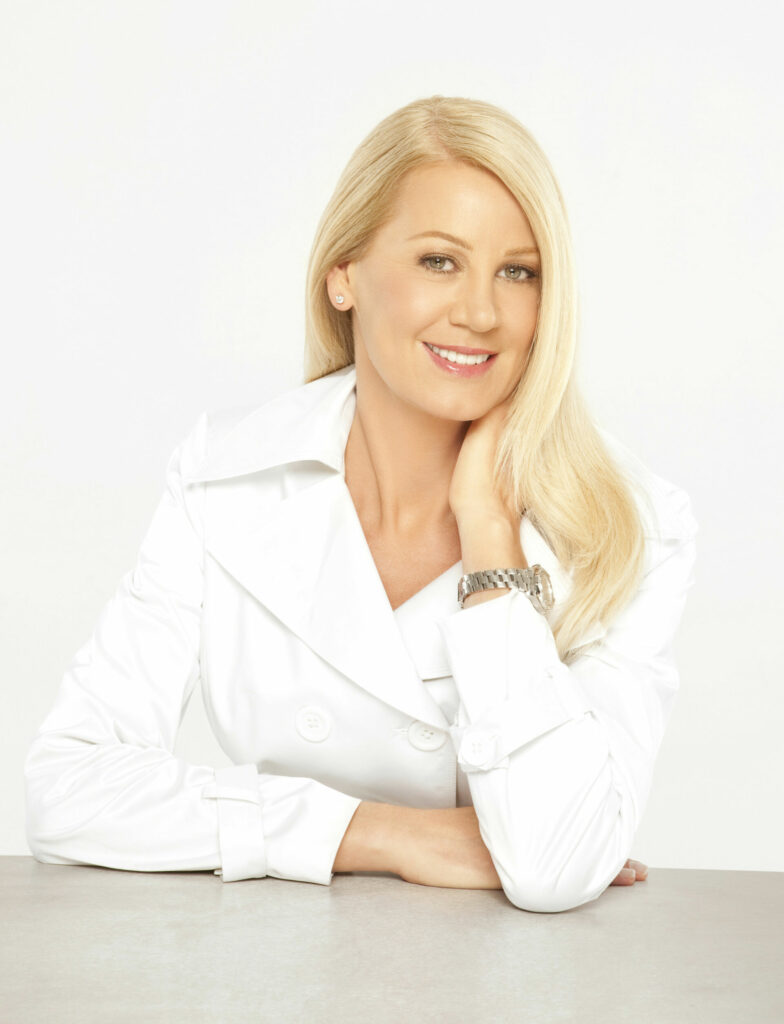
A critical part of fueling the racer is optimal hydration. Consider it part of race preparation. The two goals of optimal hydration are to improve athletic performance and prevent dangerous complications of dehydration, some of which can be severe.
In this article, we will define hydration and its relevance to racing; provide scientific facts to dispel some myths about hydration; and give the reader excellent hydration options.
In medicine, we define hydration as “the status of the fluid-electrolyte balance in a patient.” Fluid in this case is water. The electrolytes we’re concerned with are sodium, potassium, calcium and magnesium.
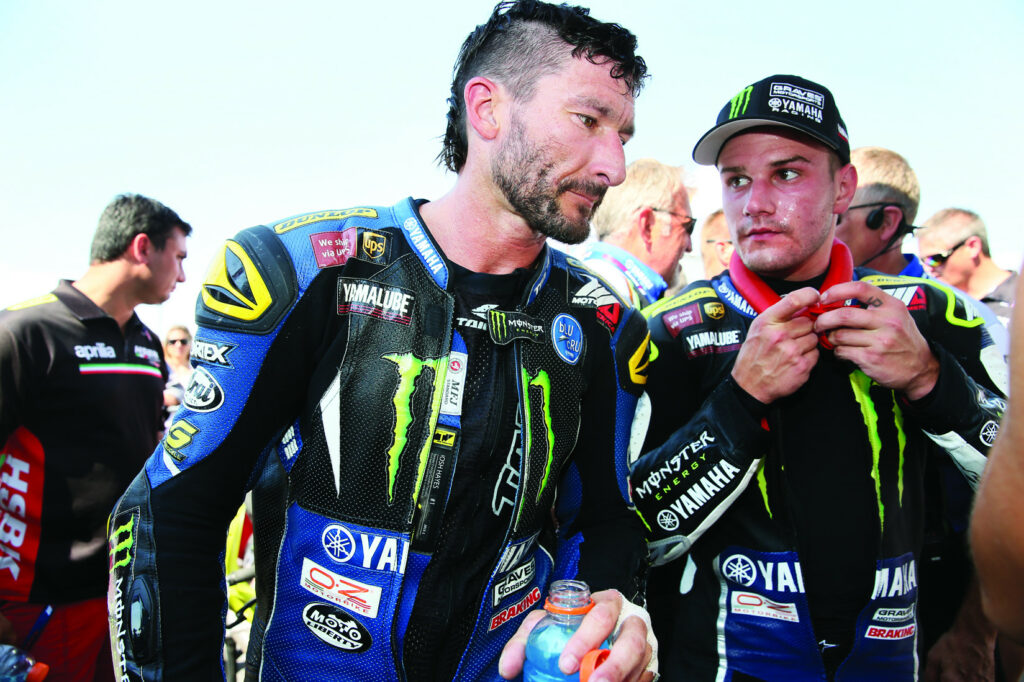
The human body is 60-75% water. Some parts of the body have more water than others. For example, the brain contains 95% water, the lungs 85% and blood 82%.
Body water is stored in two major ways; 2/3 is intra-cellular (inside the cells) and 1/3 is extra-cellular (outside the cells), in the blood stream and in between the cells.
Water is replenished by ingestion of food and water and is lost in a variety of ways called “insensible losses,” via exhaled air, urine, feces and sweat. Insensible water losses vary substantially with small changes in ambient temperature, humidity and physical exertion.
For optimal health and daily function I recommend drinking half your body weight in ounces of water. This assumes you are at or near your ideal body weight. For example, I weigh 132 pounds, which is ideal for me, so I drink around 66 ounces of water every day. That’s about 2.0 liters a day for me. Don’t count what you drink during exercise-that’s in addition to your baseline volume. Nearly everyone is under-hydrated so if you follow my daily rule you may find that you urinate quite frequently for a day or two. You’ll adjust. And you’ll notice you feel better, sleep better, are less hungry and lose unwanted weight easier. The feeling of thirst is a signal from the brain indicating we need more fluid. This thirst mechanism diminishes as we age so don’t rely on feeling thirsty before you drink. In fact, by the time you feel thirsty you’re already behind and will be functioning sub-par. Catching up can take hours or even days depending on how under-hydrated you are.
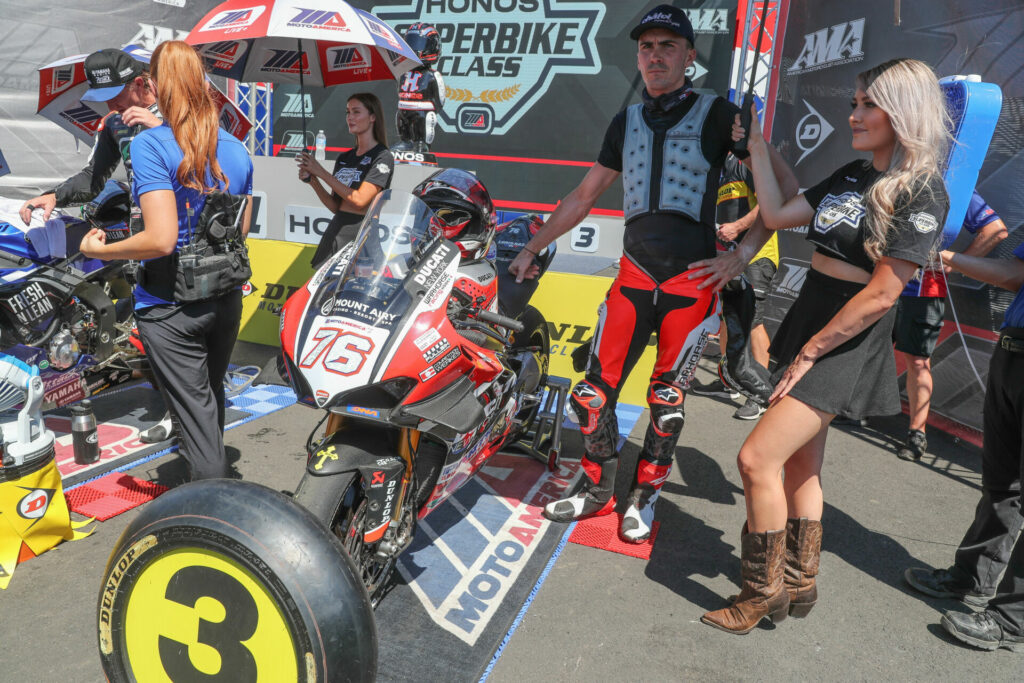
Current evidence suggests that many athletes start a training session or competitive game or race under-hydrated and do not consume enough fluids to replace sweat loss. This puts them at a distinct disadvantage, mentally and physically. Under-hydration can lead to dangerous outcomes due to poor decision-making, slower reaction times, muscle cramping and even seizures and occasionally death. Think about the times you’ve crashed. Can you attribute any of them to fatigue or slowed reaction time? Many racers tell me “yes.”
It’s important to know that sweat loss is mainly water, but it also contains minerals, which we refer to as electrolytes. Electrolytes are essential for conduction of electrical energy between and within cells, for maintaining cognitive function (decision-making), communication between nerves and muscles (reaction time) and for muscle contraction itself.
Sweat contains large amounts of sodium with much lower concentrations of potassium, magnesium and calcium.
Of the four key electrolytes contained in lost sweat only sodium can typically be depleted through sweat loss alone.
Sweating 2.0 liters per hour (which is not uncommon) in a hot race would mean that within two hours your daily intake of sodium has been depleted. Considering that there are no usable reserves of sodium in the body, you need to replace sodium as you exercise. The other three electrolytes can typically be replenished by tapping into stores within the body.
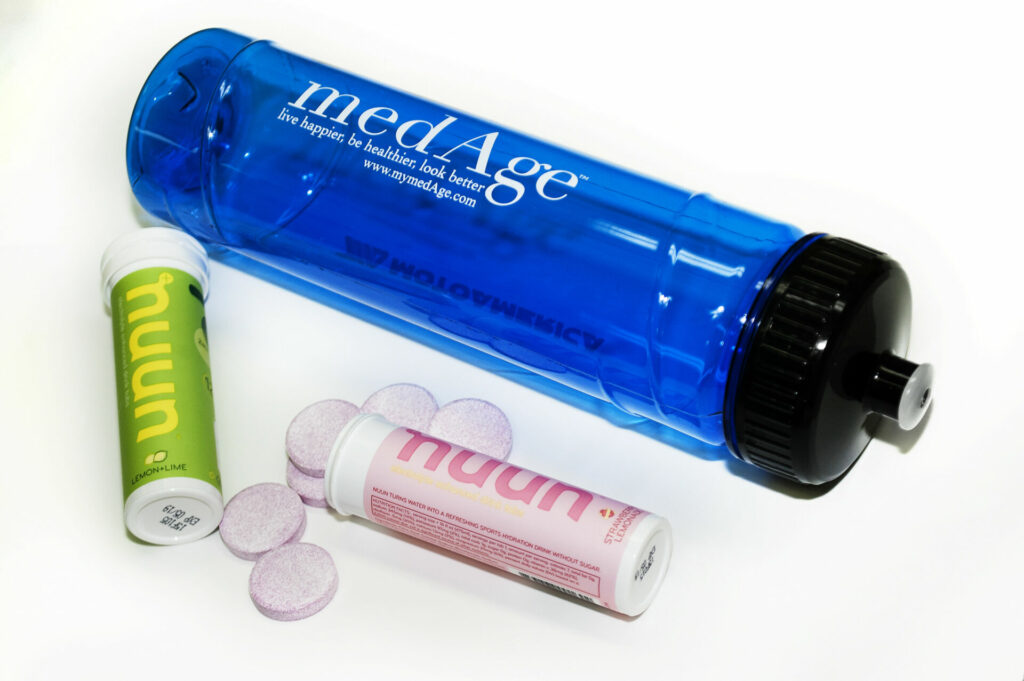
Why is sodium so important?
Sodium is not only the most likely to be lost, it is also the electrolyte most required during training and racing.
Blood sodium loss and gains are tightly regulated by the kidneys with drives from the brain to increase salt intake or drink more water as necessary.
Normal blood levels are maintained between 135-145 mmol/l (mili moles/liter) concentration. Given sodium losses, small reserves and narrow band of operation, it is relatively easy for athletes to become sodium depleted.
Low blood sodium in sports is mostly due to the dilutional effects of drinking water or low-concentration sports drinks in excess of sweat and urine sodium losses.
This condition is known as Exercise Associated Hyponatremia (EAH).
With EAH, the athlete experiences weakness, nausea, muscle fatigue and cramping. As sodium levels drop even further, resultant fluid shifts occur in an effort to equalize and water moves into the brain. This can lead to agitation, seizures and occasionally death.
Risk factors for EAH include long (4-hour+) races, slow running pace, female gender, low body weight, pre-race excessive water intake, over-drinking (more than 1.5 liter/hour) during racing and abundance of drinks during the event weekend.
What about the other electrolytes?
Potassium
Along with sodium, potassium regulates the electrical integrity of the cell membrane and is therefore important in nerve conduction.
Potassium also helps transport glucose into the cell so it is crucial for energy generation.
Low blood potassium is usually due to diarrhea, fasting and taking certain drugs such as diuretics long-term–not from sweating.
In sports, low potassium is rare. Certain ultra-endurance athletes who generally have a poor solid-food diet may be prone to low potassium, leading to nausea, muscle fatigue and weakness.
Potassium supplements should always be taken with caution and on the advice of a doctor. Contrary to what your mother may have told you, eating bananas has no significant effect on blood potassium levels.
Calcium
Calcium is intimately involved in muscle contraction and relaxation and nerve conduction.
Your body has vast supplies of calcium stored in the bones which are tapped into when needed.
Generally, in a well-nourished athlete eating a normal diet with dark-green vegetables, calcium deficiency during racing is rare.
Dietary sources are generally better than supplements. Equally important are weight-bearing exercises. Swimmers and cyclists suffer the same bone calcium loss as sedentary individuals so remember to fit weight-bearing exercises into your regimen.
Magnesium
Magnesium is necessary in every cell for enzyme reactions as well as muscle contraction and energy production.
Prolonged exercise and training with poor diet can lead to depletion although this is rare to surface in an acute setting.
Magnesium deficiency can lead to dizziness, fatigue and depression.
There is no evidence that taking magnesium supplements by people with normal blood levels offers any benefit in sports performance.
To sum it up so far, inadequate replacement of water and sodium will lead to early fatigue, weakness, nausea, muscle fatigue and cramping.
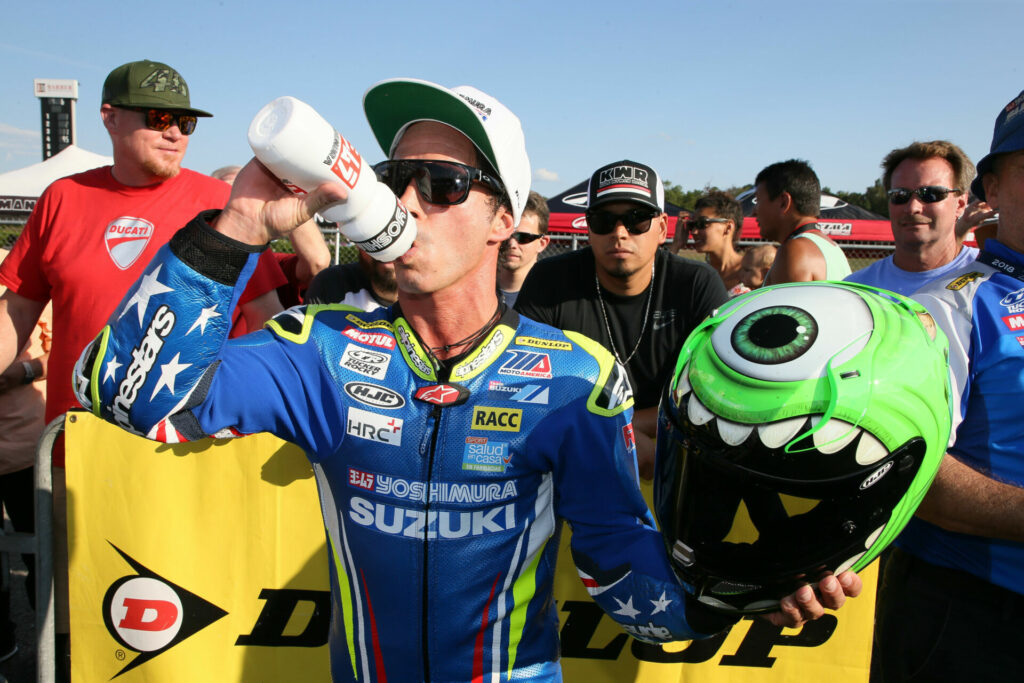
So, HOW MUCH should you drink while training and racing?
The American College of Sports Medicine (ACSM) Position Stand on Exercise and Fluid Replacement:
Before Exercise: Preload by drinking “500 mls (milliliters) fluid two hours before exercise to allow adequate hydration and allow excessive water to be excreted by the kidneys.”
During Exercise: “…individuals should be encouraged to consume the maximal amount of fluids during exercise that can be tolerated without gastrointestinal discomfort up to a rate equal to that lost from sweating…” In other words, figure out your sweat rate and simply replace what you lose. Example: A 1.2 kg loss would be replaced with 1200 mls of fluid. Measure this once or twice in various conditions (temperature and humidity) to get an idea of volume needed, then use it as a guideline for future activity in similar conditions. Sound complicated? It’s not. Professional athletes do it for a reason–it gives them an advantage. Here’s how you do it. Weigh yourself before and after a training or race event. Convert the difference in weight from pounds to kilograms, (1.0 pound x 0.4536 = kg; 1 kg x 2.2046 = lbs.). Your sweat/water loss in mls is 1000 x the kg difference. Most water bottles have ml and oz gradations so just look at the bottle for the conversion to ounces.
Now, WHAT should you drink while training and racing?
What’s the difference between all the drinks on the market? It’s confusing!
Rather unhelpfully the sports drink industry has confused hydration with fuel with recovery.
We classify sports drinks into the following groups:
Protein drinks (no carbohydrates).
Energy drinks.
Carbohydrate drinks (with or without electrolytes).
Electrolyte-only drinks.
Let’s look at each one.
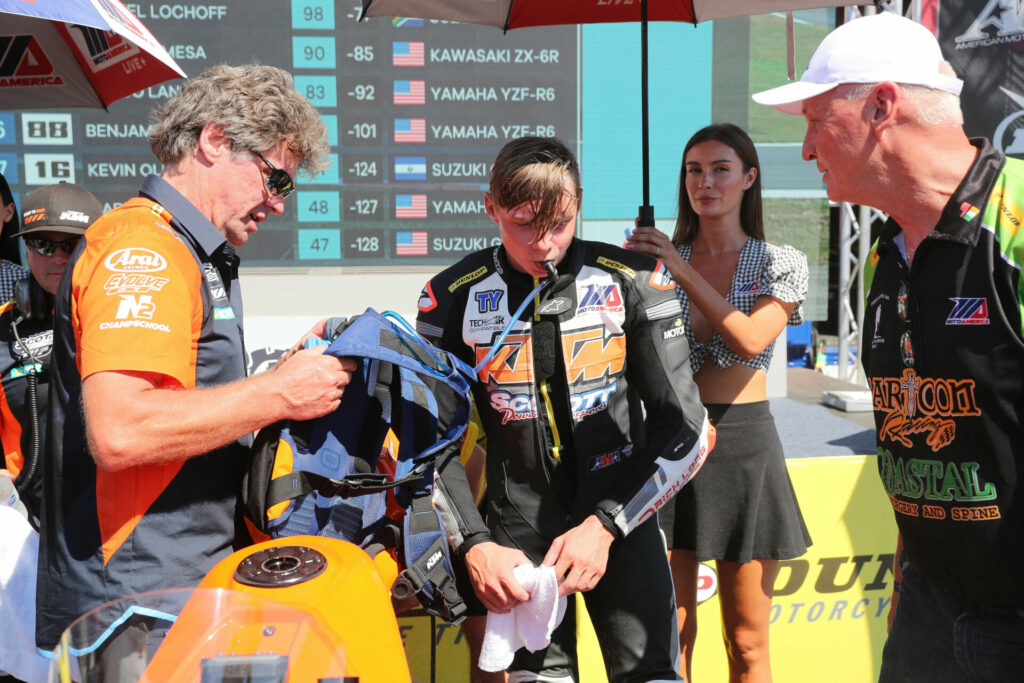
Protein drinks are popular among bodybuilders. They are primarily designed for muscular recovery post-exercise or to act as a dietary protein supplement. Protein drinks will not aid in training/race hydration needs and are typically too light in electrolyte content to help significantly with fluid balance post-event. Certainly not useful as part of your race hydration. Examples are Muscle Milk, Maximuscle, Promax, Impact, Whey Protein.
Energy drinks usually contain a lot of sugar (8%-12%) and caffeine (or natural sources of it such as guarana). They are “lifestyle drinks,” not really “sports drinks,” but are marketed at sporting events and the companies behind them sponsor many top athletes and events, even though athletes are unlikely to be drinking them. (It’s sort of like the M&M’s sponsorship in NASCAR.) Energy drinks are too sugary to work as effective rehydration drinks (above 6%-8% carbohydrate fluids are hypertonic and absorption through the gut slows down) and they are unlikely to contain electrolyte volumes found in sweat loss. Examples are RedBull, Relentless, Monster, AMP. Again, these should not be part of your race hydration.
Carbohydrate drinks are the original sports drinks, typically with 6%-8% isotonic carbohydrate solution. They often contain modest amounts of electrolytes (approximately 200-350 mg/l sodium) to assist with electrolyte replenishment and to increase palatability. They have been proven effective in boosting endurance performance for activities lasting longer than one hour at a suitably high intensity. One major issue with carbohydrate drinks is that if they are used at times when fluid requirements are very high (e.g., in the heat or during very long events) and an athlete is drinking a lot of them they are consuming an unnecessarily large amount of calories which could lead to gastric upset. They serve a purpose but have some of the issues of energy drinks and typically do not sufficiently meet the electrolyte needs of most athletes. Mixing energy and hydration needs in one drink can create imbalances since often energy and hydration needs are at different ends of the scale. Examples are Powerade, Gatorade and Vitamin Water (which actually contains calories but no sodium!).
Electrolyte-only drinks contain no or negligible amounts of carbohydrate/sugars and no protein so are designed simply to maximize hydration. They are hypotonic so are absorbed more rapidly in the gut than carbohydrate drinks. While electrolyte-only drinks do not provide carbohydrate or protein sources to meet the energy demands of exercise, products such as energy gels and bars can be consumed as energy is needed. This allows an athlete to fine tune/balance their intake of fluids, electrolytes and calories separately depending on the ambient conditions, length and intensity of the activity they are taking part in. Electrolyte-only drinks can be used before, during or after exercise to replace fluids and electrolytes without the addition of carbohydrates or other calories if they are not required. Examples are H2ProHydrate, Hi5, Zero, nuun and Elete Water.
Some riders say they have had good results using Pedialyte (or generic equivalents) for rehydration. It’s important to note that electrolytes need to be replaced only when they are lost such as in sweating or with vomiting and diarrhea. In the case of athletes we’re concerned with losses due to sweating and this is nearly exclusively sodium loss. Calcium, magnesium and potassium are stored in certain body compartments and are mobilized as needed so rarely need to be replaced. Pedialyte is perfectly fine for athletes to use for replacement but has more potassium and phosphorus than is needed–but no harm done, you just pee it out. My favorite electrolyte replacement for hydration when sweating is H2ProHydrate simply because it has what you need and nothing you don’t need, plus it comes in tablet form which is easy to transport and use. It comes in 250, 500, 1000 and 1500 concentration tablets which allows you to use a prescribed strength for pre-loading the night before sweating and using a different strength for competition and training days and adjusting to conditions (temperature, intensity, humidity) as needed. A “sweat test” can determine your sodium loss, which is unique to each athlete; this is what the true pros do–prescription hydration.
Since 2014 my team has used H2ProHydrate by Precision Hydration for fluid and sodium management. It comes in an effervescent tablet that you simply drop in your water bottle. H2ProHydrate is widely used in Europe and is produced in the UK. Over the last year it has been added to the programs of many American pro soccer and football teams. You can obtain it in this country by ordering it from various distributors. Much of the information in this article was provided by Precision Hydration.
Another good product is nuun, also an easy to use and transport tablet, which is available in the U.S. at sporting goods stores and outfitters.
For maintaining energy for long days at the track and especially for endurance competition, I encourage a diet with quality protein and complex carbohydrates. Vegetables are a critical part of this. Avoid processed food and simple carbs. If you are exhausted and need quick energy for that last race of the day, then you can add a quick fuel such as fruit juice or sports gels but expect to experience a “sugar crash” when you get back to the pit. It’s always best to maintain steady fuel, which results in a steady, reliable output of energy. That’s what gives you the winning edge over the guy who’s gulping sugary drinks and eating honey buns.
Here’s to your optimal health and on-track performance!
Dr. Laura Ellis is a wellness physician and vein surgeon with practices in Asheville, North Carolina, and in Laguna Beach and West Hollywood in Southern California. She has authored numerous articles in medical journals, and has written two books, The Hormone Handbook and Inside Out. She is host of The Dr. Laura Ellis Show at Sunset Gower Studios in Hollywood. Her medAge® Comprehensive Health Program focuses on the prevention, apprehension, and reversal of degenerative illness in all patients and on optimization of cognitive and physical function for competitive athletes. Prior to establishing her current practices, Dr. Ellis worked as a trauma surgeon and as a general surgeon. And she is a former racer as well as a current street and track rider.
Dr. Ellis ran her own team, AXcess Racing, in the 2016 MotoAmerica KTM RC Cup Series, with riders Brandon Paasch and Jackson Blackmon. Paasch won the championship with seven race wins and a total of 16 podium finishes in 17 races.
For more information contact Dr. Laura Ellis via the medAge® website at www.medAge.com.
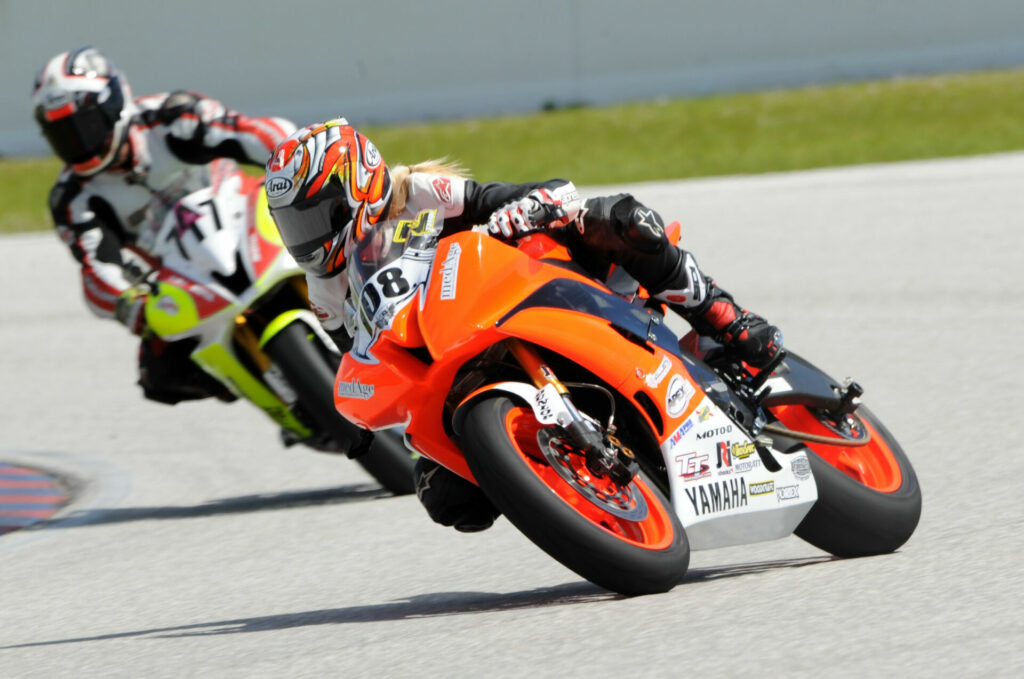
Racing Doctor: Who Is Laura Ellis, MD?
“A Minute Reduction In Your Reaction Time Can Be Devastating…”
By Michael Gougis
The journey from non-rider to racer for Dr. Laura Ellis was short. She started riding four years ago; last year, she won a rookie title with CCS. As a medical professional specializing in nutrition and exercise, she also quickly noted that lots of racers spend far more time on their machines than they do on their bodies.
Ellis applied her experience racing and working with athletes to the sport of motorcycle road racing, and has been working with racing organization staffers and racers across the nation to help them optimize their physical and mental performances. Racing provides a particular need for proper hydration, as few sports that drain the athlete’s fluids require said athlete to wear a full-face helmet, body armor and leather suit at the moment of maximum exertion.
And in few other sports are the stakes as high. “Even a slightly slower reaction time can be devastating on the track,” she says.
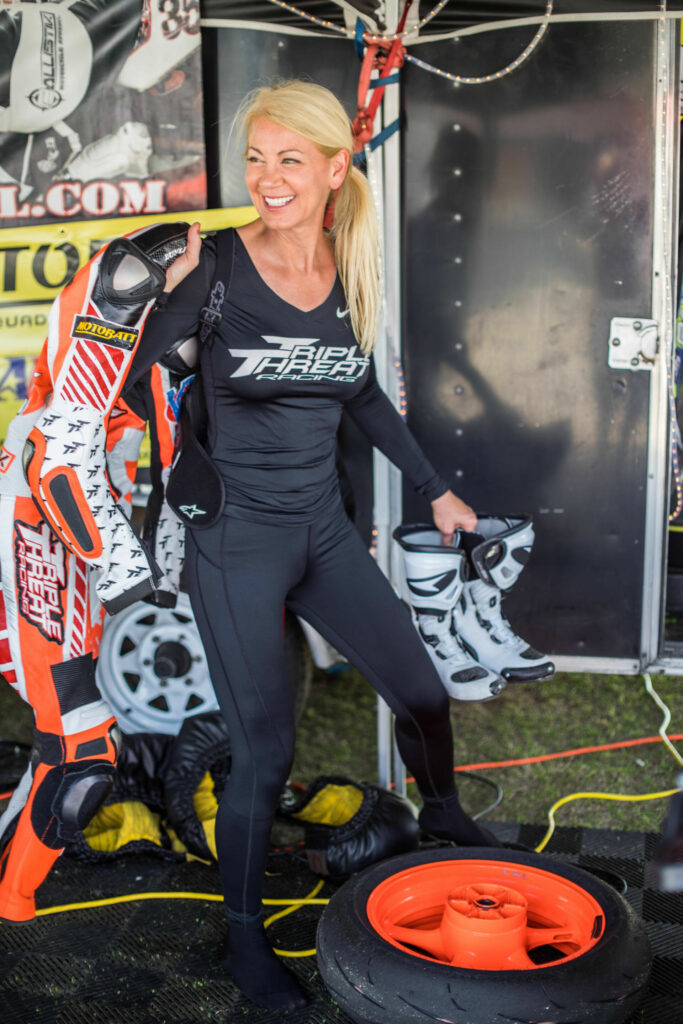
Ellis is a surgeon with a practice in Asheville, North Carolina, and others in Laguna Beach and West Hollywood, California. She also is an author and the founder of medAge, a medical program designed to develop lifestyle changes to improve her clients’ health as they age, and she advises athletes on training and nutrition.
That was the background against which, four years ago, Ellis visited motorcycle-mad Italy and got hooked on two-wheelers.
“I started riding only four years ago–I was 48 when I started riding. Kinda strange, huh? Prior to that, I had never ridden a motorcycle,” she says. “I traveled to Italy four years ago and I noticed that lots of people ride two wheels, whether they are on scooters, motorcycles or bicycles. Men and women, younger and older. I thought it looked pretty cool! So I decided to learn how to do it myself.
“When I came back to the States, I took the Motorcycle Safety Foundation course at the local community college. I enjoyed riding so much that I hired a coach to help me to learn how to ride more acceptably and safely. I wanted to learn how to do it right.” The private coach she hired suggested training at the track.
“I met quite a few folks at the track who race and I got an invitation to race with a couple of guys the following year,” Ellis says. “I of course said yes, because I was turning 50, and I thought, ‘When else am I going to have an opportunity to do this?'”
Ellis quickly moved from a Suzuki Gladius to a Yamaha YZF-R6, and her first race was with CCS at Carolina Motorsports Park in April of 2014. “I wasn’t fast but I had pretty good technique. I had to be careful that I held my line well, that I didn’t deviate, because there were (other riders) passing me. I had to be predictable. My focus was on being predictable and holding my line,” Ellis says.
“It was great. It was a lot of fun. It was thrilling but not scary. As long as you’re prepared and you understand what is happening on the track-you have to be very cognizant of the other riders out there expecting you to behave like they do, which is to be predictable.
“A couple of guys got really, really close when they were passing me,” Ellis continued. “After the race, they came over and said, ‘I’m sorry, I didn’t mean to get that close.’ It really didn’t frighten me, but I could feel them and hear them very, very close to me! It was very polite and kind of them to come over and make sure I was OK with what had happened. And that’s typical of what I’ve seen from most racers.”
What she observed while racing and spending time at the track was that many racers focused on machine prep to the exclusion of preparing themselves.
“I noticed that many of the riders spent so much energy on the bike and not nearly enough on themselves as an athlete. The equipment was, generally, well thought-out. They prepared that well. But they didn’t always prepare themselves well,” Ellis says.
One area many riders can make an immediate improvement in is hydration, she says. “Many racers don’t realize that how they consume food and drink is very important during training and recovery as well as on the day before a race and on competition day itself,” she says. “Hydration is not just water. The communication between the brain and the muscle, between the nerve and the muscle, really relies on proper electrolyte concentration and the fluid shifts between the compartments of the body once you start sweating to keep sodium levels proper. If your sodium becomes very low, those fluid shifts can lead to either high or low concentrations of sodium in certain body compartments.
“What you see most of the time on the track is that the communication between the muscle and the nerve can be compromised. We call that reaction time. You begin to slow down. You might not be able to do as well–you might not win–but you can also make mistakes.”
Dr. Ellis ran her own team, AXcess Racing, in the 2016 MotoAmerica KTM Cup Series, with riders Brandon Paasch and Jackson Blackmon. Paasch won the championship with seven race wins and a total of 16 podium finishes in 17 races.
For more information about medAge and Dr. Laura Ellis, visit www.medage.com.
To read more articles like this one originally published in the December 2015 print issue of Roadracing World, subscribe to Roadracing World. (The article has been updated with additional photos and information from later MotoAmerica racing seasons.)
More, from a Competition Bulletin issued by MotoAmerica:
High Temperatures expected at COTA
We are expecting temperatures at this weekend’s COTA round to reach or exceed 100 degrees on most days.
Please see the document attached HERE regarding healthy hydration tips for all in attendance.


